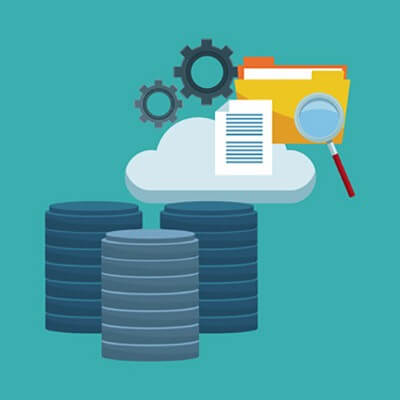Today, many of the largest and most lucrative companies in the world, Google, Apple, AT&T, Amazon, Verizon, Facebook and Microsoft are all, more than manufacturers of computer-based goods and services, data brokers. These data brokers create services that they then sell to advertisers that allow them to target you based on the information these companies have of you, which can accurately tell how and what to sell you.
Since nearly everyone has a near-ubiquitously-connected experience there is a lot of data collected, bought, and sold every year and it’s big business. Facebook, a company whose main revenue stream is from selling advertising, made a net profit of nearly $16 billion in 2017. This tells us that if you have people’s data, you have people’s hopes, fears, and dreams, which means you can pretty easily get someone to pay you for access to that information.
For small businesses it’s much less lucrative. In fact, all the data your organization needs to keep, is probably necessary to simply do business, not to sell to advertisers. Facebook voluntarily gets a lot of personal information from every one of their users, as where the typical small business often has to strategize to just get a name and a phone number. The information that is sensitive (mostly customer information that you collect) has a lot of value to the people looking to steal it. So while you aren’t making billions of dollars selling consumer profiles, it is still a mightily important part of doing business, and needs to be secured.
Is Data a Commodity?
Technically speaking, it isn’t. Since a commodity’s value is based namely on its scarcity and the amount of capital that needs to be put up to create it, in both resources and labor, the data that is being purchased isn’t really a commodity. In lieu of the dissolution of the U.S. Net Neutrality laws, this has created the argument in the U.S. that since now it’s up to the telecommunication companies how they want to manage (or more accurately bill) data consumption, that they would throttle and tier service, something that isn’t possible with a true commodity, where there are laws prohibiting those types of practices.
On the other hand, Internet access is something that a majority of the commerce requires, and delivering data is in itself an expensive endeavor (infrastructure spending, development, utility costs, etc.) so telecoms, who are seeing their would-be profits syphoned by over-the-top content providers, and publicly demonized as a result of a very public lobbying effort to gain control of the ability to implement some sort of prioritization strategy, have to find a strategy to sustain their ability to get a workable return on their investments.
Securing Your Organization’s Data
Regardless of what your view of data is, it’s an important resource for your organization, and as mentioned above, it needs to be secured. For one of your company’s most important resources, data can be lost relatively easily, so there needs to be a concerted effort to keep your network and infrastructure free from the threats that could put your data at risk. At Coleman Technologies, that’s what we do. We ensure organizations like yours get the professional IT expertise you need to work efficiently, effectively, and securely in what is the most turbulent time in computing history. With the litany of threats your business faces everyday, you need experts that have your back. We offer:
- Backup and disaster recovery: With a comprehensive backup and disaster recovery system in place, all of your organization’s data is safe, redundant, and able to be restored on demand.
- Proactive monitoring and management: By keeping a dedicated eye on your network and infrastructure, our technicians can be proactive.
- Patch management: By keeping all of your organization’s software up to date with the latest threat definitions, you can ensure that your software isn’t going to be a problem.
- Access control and threat detection: By having full control over who can access what, and a complete view of the entire network, we can keep people who aren’t supposed to see certain information from accessing it.
- Training: Most times, your own staff is responsible for data breaches and malware. We can train you all on what to look for to ensure that you are doing your best to keep your network and infrastructure free from threats.
- Around the clock support: If three out of every four businesses deal with phishing emails, and over 95 percent of all phishing emails deliver ransomware, chances are that if a mistake were to be made, you will need immediate IT support. Our support and help desk can remediate a lot of your security issues to keep downtime to a minimum.
With data such a major part of doing business today, ensuring you have the right solutions and support in place to be confident that any situation you face will be managed before it becomes a problem is in itself a benefit. Call Coleman Technologies at (604) 513-9428 for more information.




